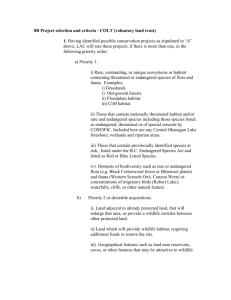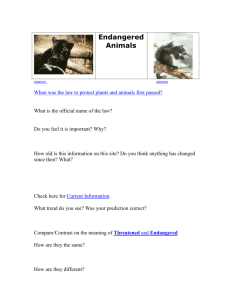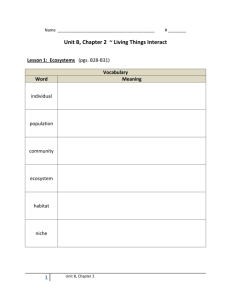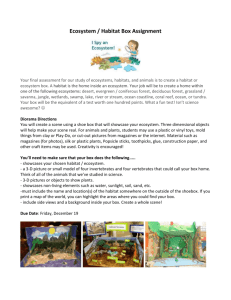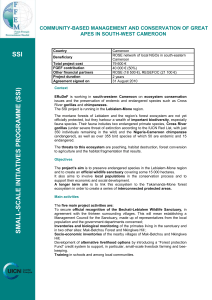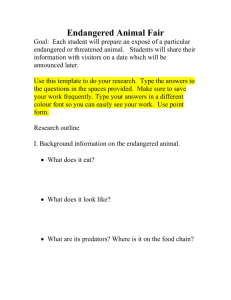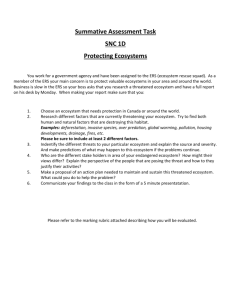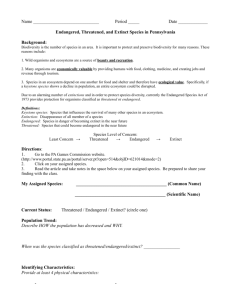GLOSSARY
advertisement
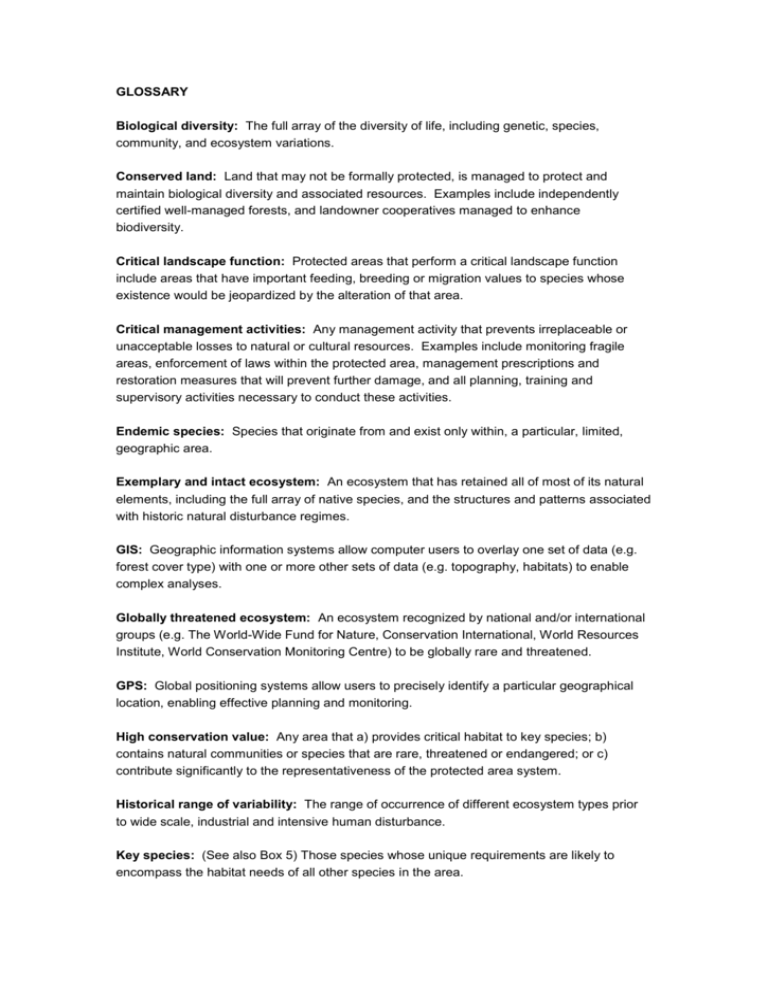
GLOSSARY Biological diversity: The full array of the diversity of life, including genetic, species, community, and ecosystem variations. Conserved land: Land that may not be formally protected, is managed to protect and maintain biological diversity and associated resources. Examples include independently certified well-managed forests, and landowner cooperatives managed to enhance biodiversity. Critical landscape function: Protected areas that perform a critical landscape function include areas that have important feeding, breeding or migration values to species whose existence would be jeopardized by the alteration of that area. Critical management activities: Any management activity that prevents irreplaceable or unacceptable losses to natural or cultural resources. Examples include monitoring fragile areas, enforcement of laws within the protected area, management prescriptions and restoration measures that will prevent further damage, and all planning, training and supervisory activities necessary to conduct these activities. Endemic species: Species that originate from and exist only within, a particular, limited, geographic area. Exemplary and intact ecosystem: An ecosystem that has retained all of most of its natural elements, including the full array of native species, and the structures and patterns associated with historic natural disturbance regimes. GIS: Geographic information systems allow computer users to overlay one set of data (e.g. forest cover type) with one or more other sets of data (e.g. topography, habitats) to enable complex analyses. Globally threatened ecosystem: An ecosystem recognized by national and/or international groups (e.g. The World-Wide Fund for Nature, Conservation International, World Resources Institute, World Conservation Monitoring Centre) to be globally rare and threatened. GPS: Global positioning systems allow users to precisely identify a particular geographical location, enabling effective planning and monitoring. High conservation value: Any area that a) provides critical habitat to key species; b) contains natural communities or species that are rare, threatened or endangered; or c) contribute significantly to the representativeness of the protected area system. Historical range of variability: The range of occurrence of different ecosystem types prior to wide scale, industrial and intensive human disturbance. Key species: (See also Box 5) Those species whose unique requirements are likely to encompass the habitat needs of all other species in the area. Keystone species: Any species which, when removed from an ecosystem, is likely to cause drastic, unanticipated changes. These species often influence the ability of large numbers of other species in the community to persist. Low-impact land use: Land use can be considered low-impact if it has a minimal impact on the forest. Examples include low road density, clearance size limitations to minimize perforation and fragmentation, and restrictions on noise and pollution. Minimum viable population: The minimum population of a species necessary for that species to persist in the future (usually 500 years), given the random variability of population dynamics. Natural processes: The natural processes of an ecosystem include processes that allow the ecosystem to function and evolve. Examples include natural disturbance and succession processes, nutrient recycling (e.g. plant decay and decomposition), reproduction (e.g. pollination, fertilization), and species predation and migration. Natural resources inventory: An inventory (usually with maps), of the area’s natural resources, including forest cover types, water resources, important habitat areas, occurrences of rare, threatened or endangered species, and other areas of ecological and/or social significance. Pressure: Pressures are forces or events that have already had a detrimental impact on the integrity of the protected area (i.e. that have resulted in diminished biological diversity or capacity, and/or impoverishment of the area’s natural resources). Pressures may include both legal and illegal activities and may result from direct and indirect forces. Protected area system: A protected area system includes all areas formally and designated as protected areas. The “system” may also include all protected area-related policies, as well as the landscape surrounding the protected areas. Rare, threatened and endangered species: Rare species are any species with very low occurrences, either naturally or as a result of human actions. Threatened species are rare species threatened with localized extirpation or decline. Endangered species are rare species in danger of permanent extinction. Sustainable development: Use of natural resources that minimises impacts on the forest structures and processes, and that does not compromise the forest’s long-term productive and regenerative capacity. Examples may include ecotourism, non-timber forest product collection, and small-scale sustainable forestry operations. Threat: Threats are potential or impending pressures in which a detrimental impact is likely to occur or continue in the future. Umbrella species: An umbrella species is one which, by the nature of its habitat needs, can serve as a conservation proxy for protecting other related species. An example is black bear.
